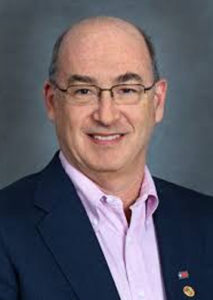Dr. Max Sherman is the Principal Investigator for this project and will lead the technology-transfer efforts. Dr. Rengie Chan leads SVACH’s state-of-the-art literature review of smart ventilation and its benefits. Dr. Brett Singer leads the IAQ-metrics task. Dr. Iain Walker leads the Single-Zone-Technology and the zonal-technology evaluations. Saturn Resource Management fulfills a technology-transfer role by building and managing the SVACH informational website. Aereco provides support for on the zonal-technologies and airflow controls.
Dr. Max Sherman – Project Manager
 The project manager (PM) is Max Sherman, who has managed many projects for the federal government and the CoEC, including the successful RESAVE Program. Dr. Sherman has been an active researcher in the area of ventilation, natural infiltration, and indoor air quality for more than a 25 years. He is a Fellow of both ASHRAE and the International Society of Indoor Air Quality and Climate (ISIAQ). And Max is one of the very few Senior Scientists doing research in the Building Technology and Urban Systems department at LBNL.
The project manager (PM) is Max Sherman, who has managed many projects for the federal government and the CoEC, including the successful RESAVE Program. Dr. Sherman has been an active researcher in the area of ventilation, natural infiltration, and indoor air quality for more than a 25 years. He is a Fellow of both ASHRAE and the International Society of Indoor Air Quality and Climate (ISIAQ). And Max is one of the very few Senior Scientists doing research in the Building Technology and Urban Systems department at LBNL.
Dr. Sherman earned his Ph.D. in physics from Berkeley where his dissertation covered air natural infiltration in buildings. He’s authored nearly 200 publications in the building-airflow field. Max is responsible for groundbreaking work on topics such as natural infiltration, ventilation, and indoor air quality. He has recognized success in managing research programs, publishing scientific papers, and facilitating technology transfer to policy makers. He is responsible for the overall management of the SVACH project.
Other LBNL scientists share responsibility for specific tasks and sub-tasks. The key LBL scientists involved are Dr. Iain Walker, Dr. Rengie Chan, and Dr. Brett Singer.
Dr. Iain Walker
 Dr. Walker will lead the simulation and analysis tasks and oversee use of the REGCAP simulation tool, which he developed.
Dr. Walker will lead the simulation and analysis tasks and oversee use of the REGCAP simulation tool, which he developed.
Dr. Walker is an ASHRAE Fellow and currently leads the Residential Building Systems group. He has managed projects for the federal government and the Commission, including a current project, “Comparing Attic Approaches for Zero Net Energy Homes” and a recently completed project, “More Efficient Residential Heating and Cooling by Airflow Instrument Standards” . He has researched residential ventilation, natural infiltration, HVAC systems, and home retrofits for more than 20 years.
Iain is vice-chair of the national standard for residential indoor air quality, ASHRAE 62.2. He is also an Executive Editor of Home Energy magazine. Dr. Walker is the task group leader for ASTM standards committees on range hood performance and building and duct system air leakage. He also serves on Building Performance Institute, RESNET, and ACCA standards technical committees. Iain provides leadership and technical input to many local, state, national, and international bodies. Iain’s industry connection drives the building industry’s interest in adopting SVACH technology.
Dr. Walker has authored more than 30 journal articles, 60 conference papers, and 40 research reports, many of which can be found at http://homes.lbl.gov/publications.
Dr. Jordan Clark
 Jordan Clark has a diverse background in experimental and modeling work at the University of Texas at Austin and NREL. He specializes in measurement and prediction of transport processes in buildings. The National Science Foundation (NSA) chose Jordon for the prestigious Integrative Graduate Education and Research Traineeship (IGERT) as a Fellow in Indoor Environmental Science. For this fellowship, Jordan measured heat transfer and airflow and contributed those metrics to load calculations and energy-modeling software. He also measured the effectiveness of particle-removal devices and indoor gaseous-pollutant transport. At NREL, Jordan measured real-world heat transfer and created complex models building systems including first-principles models of novel HVAC equipment.
Jordan Clark has a diverse background in experimental and modeling work at the University of Texas at Austin and NREL. He specializes in measurement and prediction of transport processes in buildings. The National Science Foundation (NSA) chose Jordon for the prestigious Integrative Graduate Education and Research Traineeship (IGERT) as a Fellow in Indoor Environmental Science. For this fellowship, Jordan measured heat transfer and airflow and contributed those metrics to load calculations and energy-modeling software. He also measured the effectiveness of particle-removal devices and indoor gaseous-pollutant transport. At NREL, Jordan measured real-world heat transfer and created complex models building systems including first-principles models of novel HVAC equipment.
Jordan recently gained experience in wind tunnel evaluation of outdoor dispersion and natural ventilation of buildings. Jordan is also currently leading ASHRAE’s Natural Ventilation Working Group. Jordan is fluent in multiple programming languages. His programs simulate the various airflow processes in buildings and calculate their energy use. Jordan prides himself on being able to communicate technical material effectively with clients, team members and other researchers.
Dr. Vi Rapp

Dr. Rapp is currently a Research Scientist in the Environmental Technologies Area at LBNL. Her research focuses on ultra low emission and net zero carbon combustion technologies for heat and power generation. Her current research includes efficient, low emission technologies for combustion appliances and small engines. Vi also designs advanced biomass cookstoves for the developing world.
Vi’s combustion projects develop low emission, high turndown technologies for the following
- Residential combustion appliances;
- Ultra-low emissions, carbon-neutral combustion technologies for heat and power applications;
- Rapid, high throughput biofuel property test methods to accelerate biofuels adoption.
Previously, as a Postdoctoral Fellow at LBNL, she promoted combustion-safety diagnostics for mitigating health problems when retrofitting residential buildings.
AERECO
 Aereco S.A. shares SVACH’s cost with LBNL. It supplies technical expertise to the project at Aereco’s own expense as as well as providing funds to the LBNL team. Aereco’s primary interest is in advancing smart zonal ventilation technologies so that they are treated equally with single-zone technologies for California building rebates.
Aereco S.A. shares SVACH’s cost with LBNL. It supplies technical expertise to the project at Aereco’s own expense as as well as providing funds to the LBNL team. Aereco’s primary interest is in advancing smart zonal ventilation technologies so that they are treated equally with single-zone technologies for California building rebates.
The project manager for the Aereco effort is Pierre Lopez. The Aereco team will participate in all SVACH technical tasks especially on zonal approaches to ventilation. Marc Jardinier, the CEO, of Aereco committed both to provide direct funding to LBL as well as to assign Aereco researchers to provide research assistance.
Pierre Lopez this the contract manager. Dr. Elsa Jardinier is the Aereco research team lead. She has a Ph.D. in physics and is well-versed the European ventilation technologies along with the performance of European ventilation systems. The addition of the Aereco team will, without using any EPIC funds, greatly increase our ability to access state of the air technologies.
Saturn Resource Management
 A key part of the technology-transfer task is creating on-line information and guidance to assist industry in making use of this project’s results. John Krigger on behalf of Saturn Research Management (along with Darrel Tenter) will be sub-contracted to prepare this guidance.
A key part of the technology-transfer task is creating on-line information and guidance to assist industry in making use of this project’s results. John Krigger on behalf of Saturn Research Management (along with Darrel Tenter) will be sub-contracted to prepare this guidance.
Saturn Resource Management is one of the leading publishers, curriculum developers, and training organizations in the building performance business. Saturn assisted U.S. DOE in aligning the agency’s Standard Work Specifications for Home Energy Upgrades (SWS) with the 2012 International Residential Code and the International Energy Conservation Code from 2012 through 2015. In 2014 Saturn published a 500-page illustrated field guide, customizing it to local codes and weatherization best practices in 17 States. Saturn provides these customized field guides to state weatherization programs in three formats: Adobe PDF, HTML 5 web-help document, and hard copy.
Saturn’s electronic documents hyperlink to the SWS website, housed as an internet database at the National Renewable Energy Lab (NREL). These links help U.S. DOE monitors verify that state weatherization field guides comply with the SWS, which is a U.S. DOE funding requirement. The links also allow state weatherization managers and monitors to compare their field guides with the federal SWS standards.
In 2014, Saturn rewrote a 300-page home-building manual, Northern Comfort, with more than 150 color illustrations, for the Alaska Craftsman Home Program (ACHP). ACHP is the designated organization of the Alaska legislature for training contractors and members of the building trades on Alaska’s Building Energy Efficiency Standards (BEES). Part of that project included aligning Northern Comfort to the relevant parts of the 2012 International Residential Code.